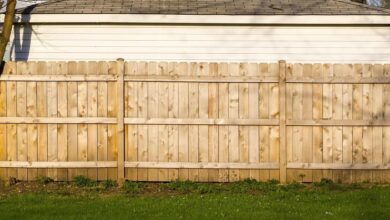Left Gas Stove On Without a Flame: Safety Measures and Solutions

Gas stoves are a popular choice for many households due to their instant heating and temperature control. However, leaving a gas stove on without a flame can be incredibly dangerous and lead to devastating consequences. In this article, we will discuss safety measures and solutions for common gas stove problems, as well as preventive measures to ensure your safety and the safety of your loved ones. It is crucial to follow these tips to prevent accidents related to gas stoves.
Leaving a gas stove on without lighting it can lead to dangerous gas buildup and explosion risks. Knowing key safety measures and solutions for this common issue is critical for all gas stove owners.
Importance of Gas Stove Safety
Gas stoves provide convenient cooking functionality for millions of households. However, they also pose fire, health, and even explosion hazards if not used carefully according to safety guidelines. Leaving a gas stove burner on without igniting it allows gas to freely flow into the room, leading to dangerous consequences.
Common Gas Stove Accidents and Issues

Some common stove-related accidents and issues caused by unused flowing gas include:
- Gas leaks – Faulty or damaged stove components can allow uncontrolled gas escape. Prolonged exposure causes high risk.
- Gas buildup and explosion – Unburned gas from an open stove can concentrate in indoor spaces leading to sudden ignition and violent explosions.
- Carbon monoxide poisoning – Without flame ignition, gas appliances release lethal, odorless, and colorless carbon monoxide that can be fatal in high concentrations.
- Fires – Gas can ignite from another flame source resulting in fast spreading fires fed by escaping gas.
Safety Measures
Gas stove accidents can be minimized by learning and applying important safety steps.
Turn Off Stoves Immediately If Gas Smell Is Detected
A strong gas odor usually indicates a dangerous leak or release. Take immediate emergency action:
- Locate main shut off valve – Familiarize yourself with the location and operation of your unit’s gas supply shutoff lever or knob before an incident occurs.
- Evacuate the area – Do not stay in the vicinity of uncontrolled gas discharge. Clear everyone from the building and call emergency responders if necessary.
- Do not create ignition sources – Eliminate any sparks, electrical switches, open flames or other ignition risks to prevent possible gas explosions.
- Ventilate after addressing leaks – Once gas flow secured, open windows and use fans to fully ventilate room air before re-entering.
Avoid and Reduce Unattended Burner Use
Leaving an active burner without a flame presents consistent danger. Exercise the following precautions:
- Don’t leave ignited burners unattended – Stay near the stove if a burner is on to immediately address any issues. Unstable flame or blow outs allow gas escape.
- Ensure all knobs are fully off when done – Visually confirm burner control knobs are rotated completely into the off position. This prevents accidental or unintended gas flow.
- Upgrade to automatic shutdown stoves – Many newer stoves feature auto-shutoff devices to stop gas flow if no flame detected for a period. Consider replacing outdated, risky models.
Regular Maintenance and Inspection
Conduct routine stove examinations and upkeep to verify and sustain safe system function:
- Check for gas leaks regularly – Apply leak detection solution routinely and confirm no bubbling, hissing sounds or noticeable gas odor around fittings and connections. Immediately address any positive leak indications.
- Clean clogged burner ports – Use a wire brush, needle or compressed air to clear any debris, grease residue or insects/webs blocking burner gas outlet holes. Optimizes flame performance and stability.
- Replace worn components – Inspect burner caps, control valves, regulator, hoses and seals for wear, cracks or deterioration. Parts wear over time – replace outdated components.
- Annual servicing by certified gas contractor – Hire professional stove servicing annually to test for leaks, affirm burner/supply performance, examine exhaust venting and confirm overall safety.
Install Gas and CO Detectors
Adding redundant gas and carbon monoxide monitoring improves leakage and accumulation detection:
- Audible gas alarms mounted at appliance height alert household immediately to uncontrolled gas discharges for rapid response.
- CO alarms at room levels provide warning to deadly carbon monoxide accumulation from burners operating minus flames. Allows fast evacuation and venting before life threatening concentrations occur indoors.
Ensure Effective Ventilation
Safely removing combustion byproducts created by burners requires dedicated ventilation and exhaust systems:
- Over-the-range exhaust hoods help pull residual gas and combustion byproducts directly above stove where concentrated after burner use – vent to outside using exhaust ductwork. Upgrade undersized, outdated underpowered exhaust fans.
- Room air exchange via fresh air returns complement hood venting. Optimized air replacement helps dilute any stray waste gas not immediately evacuated.
- Avoid indoor spaces lacking ventilation – Never install or operate a free standing range with open burners in confined areas lacking dedicated exhaust and adequate air changes per hour. Can cause lethal gas and carbon monoxide concentrations over time.
Addressing Common Gas Stove Problems
Improper stove operation increases risks of gas leaks and open burner discharge without ignition. Address frequent core issues for enhanced stove safety:
Solving Low Flame Problems
Weak flame output or intermittent “lighting” of burners presents leakage danger during perceived off cycles. Several solutions exist:
- Clean clogged gas ports – Use compressed air or narrow wire pipe cleaners to clear blocked burner output holes preventing full flame ignition.
- Adjust gas regulator – Locate and confirm kitchen gas regulator inlet pressure meets appliance rating specifications (often 5-7 inches water column). Adjust to increase supply pressure if low.
- Replace regulator if ineffective – Appliance regulators can wear, stick or improperly regulate over time. Swap in new replacement model if regulator adjustments don’t solve insufficient flame/low pressure issue.
- Upgrade stove burner components – Defective, leaky or under-capacity burners unable to sustain adequate flame with sufficient gas volume may need replacement by technician.
Clearing Clogged Burner Ports
Burner output holes eventually clog from food, grease and debris preventing full, stable gas flow to sustain flame. Regular cleaning maintains optimum performance:
- Wipe plated metal burner caps – Use non-abrasive cloth and warm detergent water to remove stuck-on spills covering output holes underneath caps. Thoroughly dry components before replacing.
- Brush ports clear – With caps removed, use narrow diameter wire pipe brush in circular motion to dislodge and clear any organic/inorganic blockages preventing gas exit from base.
- Blow out with pressurized air – After brushing, apply short bursts of compressed air (canned duster products) into the burner bases to flush loose debris from newly cleared holes.
- Prevent future clogs – Refrain from submerging caps or burners in sink water (seals moisture/debris in tiny ports). Wipe gentle spills immediately to inhibit buildup. Capture food drips with range hood filters.
Repairing Leaking Gas
Neglected gas leaks decrease stove safety by allowing dangerous discharge into indoor spaces. Extinguish leaks rapidly using:
- Turn off gas supply first – Rotate main cutoff valve lever to secured, off-position stopping further leakage while working.
- Inspect fittings, lines. connections – Apply specialized leak detection solution around suspect joints, valves, hoses watching carefully for growing bubble clusters indicating gas escaping at interface.
- Tighten, re-tape faulty fittings – If threaded connections oozing gas, tighten further or apply fresh thread seal tape for leak-proof join. Replace corroded, damaged fittings.
- Replace faulty supply lines/valves – For larger leaks at critical junctures (main cutoff, regulator, burner valves), replacing entire affected component may be only option. Use only gas appliance certified parts meeting manufacturer specifications. Consider professional installation.
Guarding Against Carbon Monoxide
Lethal carbon monoxide gas is a largely undetected byproduct of burners running without proper flame ignition. Protect households using:
- Routinely check flames while cooking – Frequently verify stove top burner flames sustained tall, mostly blue and stable. Weak, lazy yellow flames, or intermittent wavering indicate gas flow trouble. Shut off affected burners and contact technician if flames seem abnormal.
- Install UL-Listed CO detectors – Place approved carbon monoxide monitors at centralized room locations at seated “nose level” according to manufacturer directions. Choose models with digital displays visually indicating rising PPM concentrations for fastest response.
- Never block stove ventilation paths – Ensure overhead range exhaust hood, adjacent cabinetry airflow gaps and home HVAC returns remain clear of obstructions inhibiting appliance combustion byproduct venting.
Preventative Safety for Gas Stove Owners
Observing key precautions for gas stoves minimizes major risk events before occurring:
Maintain Clean, Grease Free Surfaces
spilled food, grease accumulation support fire escalation if ignited by faulty burners. Regular surface cleaning inhibits this:
- Frequently degrease stove surfaces, controls. Warm detergent, non-abrasive scrub pads dissolve splattered grease before becoming sticky buildup if ignited.
- Replace metal filter in overhead range hoods when visibly obstructed by grease. Helps optimize venting performance.
- Vacuum back guards behind range to remove hidden debris around critical gas components. Prevents rodents chewing vulnerable gas hoses or valves.
Clear Area of Flammables
Avoid storing cleaning chemicals, papers, plastics or other easily combustible materials adjacent to stove clearance zones:
- Maintain manufacturer recommended clearances around cooking appliance – usually 30 inches minimum lateral clearance from adjacent walls or combustibles.
- Never temporarily place flammable canisters, sponges, towels or boxes around working stove. Keeps immediate ignition source away from unintended fires.
Prepare Fire Extinguishing Equipment
Despite precautions, stove related fires periodically still occur. Ready extinguishing items before emergency requires:
- Store multipurpose ABC fire extinguisher in visible, readily accessible kitchen location – ideally mounted to wall stud near exit path.
- Verify extinguisher pressurized/charged via built-in gauge monthly. Replace units older than 5 years.
- Consider installing UL300 compliant home fire suppression system releasing extinguishing agent from above at first sign of kitchen blaze. Greatly limits fire spread.
Practice Gas Stove Safety
Finally, reinforcing vigilant gas stove habits limits likelihood of accidents:
- Supervise children carefully near working stove.
- Never leave food items, especially grease/oil, cooking over flames unwatched – leading cause of kitchen fires.
- Turn off all burners fully when cooking complete. Avoid false sense knobs are in off position without checking visually.
- If burner flames seem unstable/incorrect – shut off, call technician to inspect for maintenance/repair before next use.
Conclusion
Gas stoves offer convenient cooking solutions, but require knowledgeable precaution against inherent fire and health dangers. Leaving burners activated minus flames risks gas accumulation, explosions and lethal carbon monoxide production in households. By applying dedicated safety measures like leak avoidance, area ventilation, and emergency preparedness, owners can cooked safely minimizing stove disasters. Prioritizing preventative habits like degreasing surfaces, securing ignition every use, confirming full shutoffs when done, and upgrading dated appliances offers reliable protection over time. Staying informed on solving low flame troubles or clogged gas blockages further sustains stove integrity. While following guidelines helps limit gas stove risks, understanding when professional help required remains essential. By pairing proper precautions with necessary maintenance, households can responsibly unlock gas cooking benefits.




